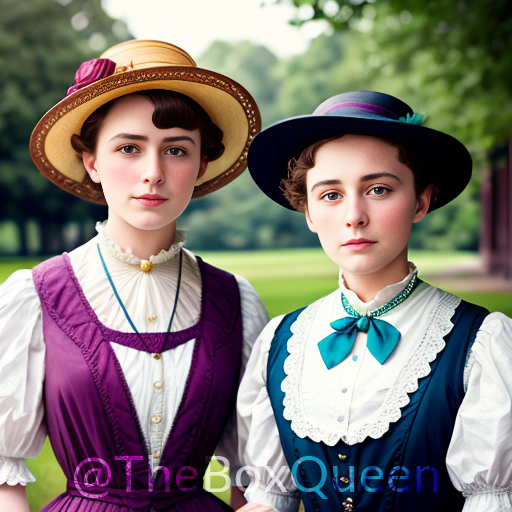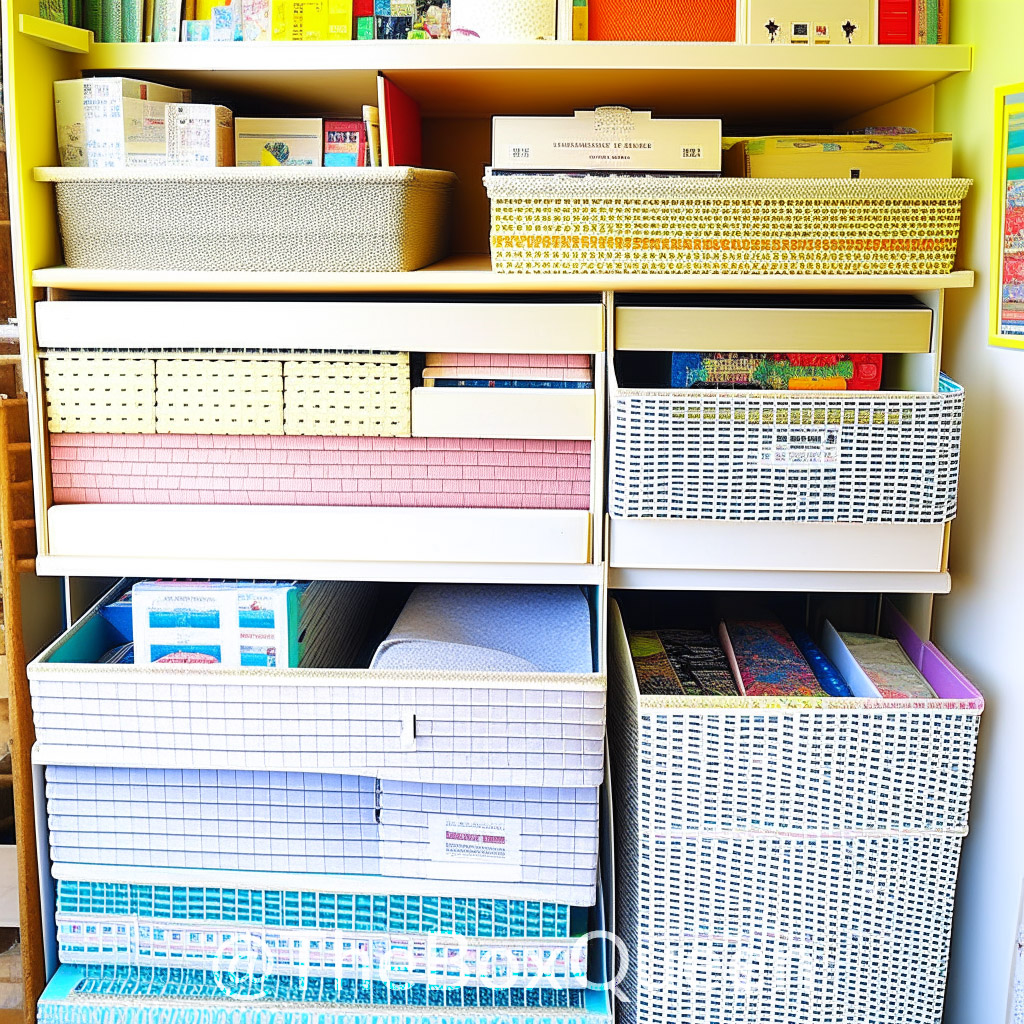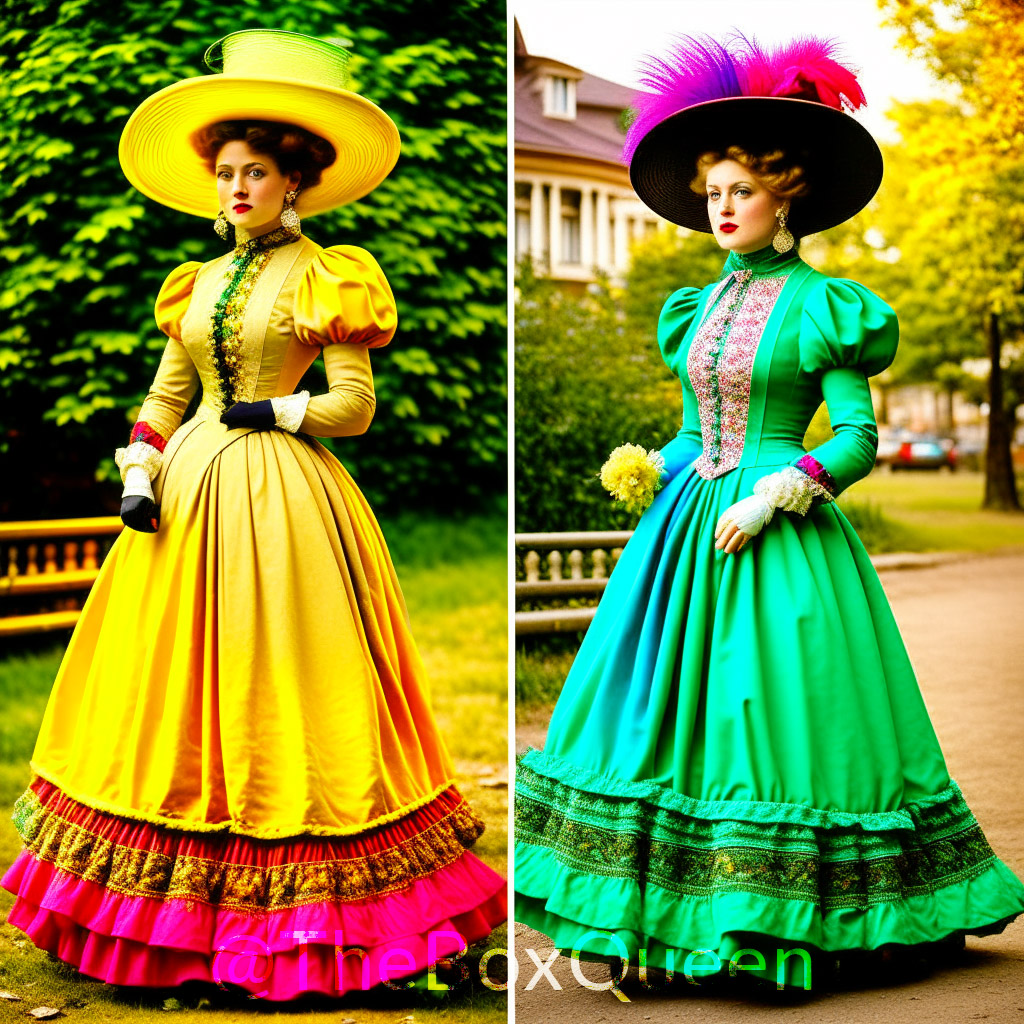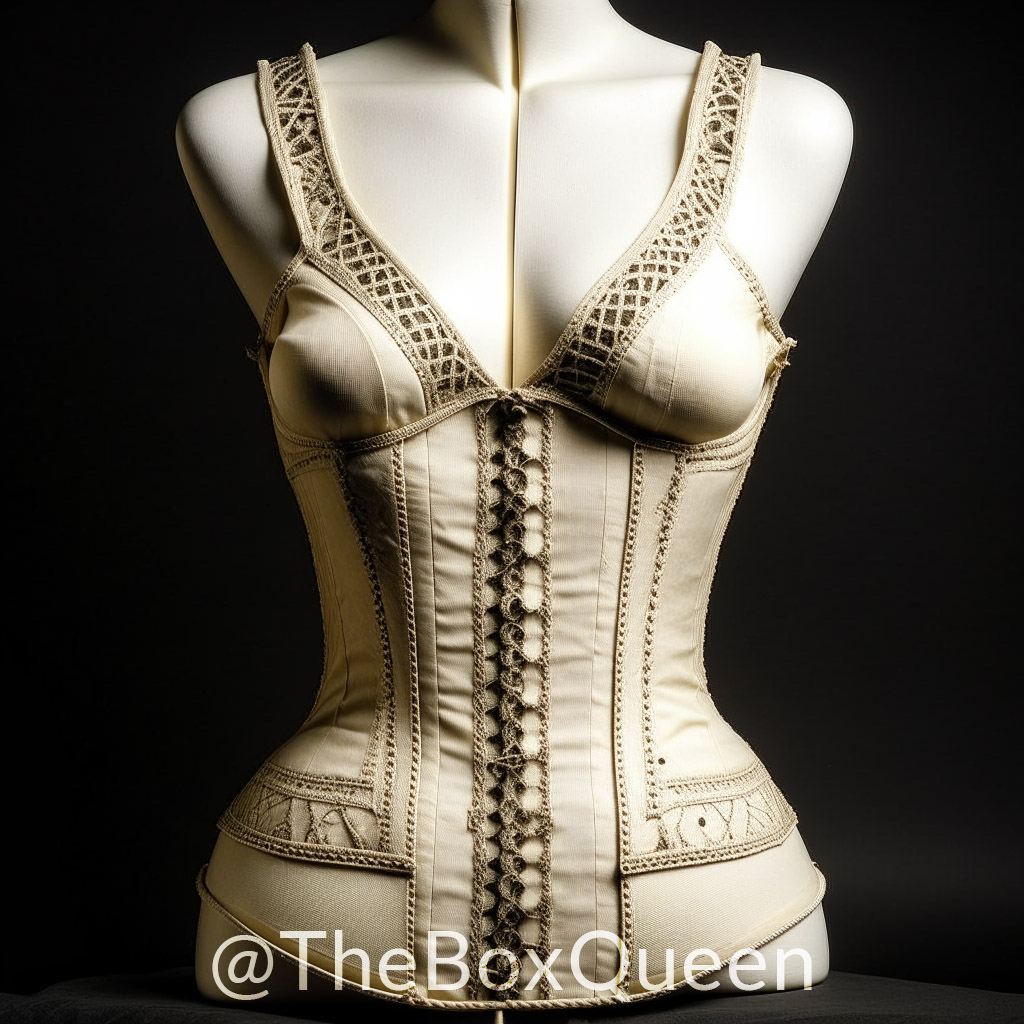Welcome to our thorough reference to Edwardian era clothing. We shall go into the finer points of the fashion fads and styles that dominated the early 20th century in this post. The Edwardian Era embodied a period of richness and refinement with its magnificent clothing and chic accessories. Join us as we examine this fascinating era’s fashion scene Check A comprehensive details.
The Edwardian Era: An Overview
The late Victorian era and the contemporary era were separated by the Edwardian Era, which stretched from 1901 to 1910 and was named after King Edward VII. Fashion trends were profoundly influenced by the major social, political, and cultural developments that occurred during this time. People desired to abandon the restrictions of the Victorian era and adopt a more modern and emancipated style as the globe entered a new century.
Women’s Fashion in the Edwardian Era
Silhouette and Structure
Women’s fashion during the Edwardian era focused on a distinctive silhouette with an S-shaped physique. Women favoured a full, full-bodied shape with a narrow waist, a prominent posterior, a high, rigid collar, and a large bust. Corsets were used to mould the body into this distinctive silhouette, giving it an hourglass appearance. The Edwardian corsets were slightly less constrictive than those from the Victorian era, allowing for more comfort and mobility.
Dresses and Skirts
The Edwardian era saw the emergence of dresses that were refined and exquisite, with delicate fabrics, intricate lace, and superb needlework. The “Gibson Girl” figure, popularised by artist Charles Dana Gibson, had a significant impact on the ideal fashion trend of the era. Women wore floor-length skirts that were long and flowing, frequently with a small train at the rear. In order to make the skirts appear broader, they were often supported by several layers of petticoats.
Daywear and Eveningwear
Women typically wore simpler, less ornate garments made of airy materials like cotton or linen throughout the day. These dresses frequently had shirtwaist silhouettes or had lengthy skirts and fitted blouses. During this time, the shirtwaist style that has a button-down blouse and a high collar rose to prominence.
While evening clothing was distinguished by grandeur and opulence. Women dressed themselves in opulent silk, satin, or velvet robes that were frequently ornamented with beads, sequins, or lace. These dresses had complex draping, flowing lines, and occasionally even included Art Nouveau-inspired details, which were popular in the Edwardian era.
Accessories and Hairstyles
Edwardian clothing was greatly complemented by accessories. Wide-brimmed hats were fashionable and added a sense of elegance to any attire. They were sometimes embellished with flowers, ribbons, and feathers. Gloves, parasols, and fans were other necessary accessories; these items were frequently constructed of luxurious fabrics like lace or silk.
Women wore their hair in elaborate updos that were frequently adorned with tiaras or jewelled pins. During this time, the pompadour hairstyle, in which the hair is swept up and away from the face, was very popular. Women frequently used synthetic hairpieces to create a voluminous and extravagant look.
Another crucial component of Edwardian style was jewellery. There was a great demand for delicate necklaces, brooches, and earrings set with diamonds, pearls, and other precious stones. Due to its durability and capacity to highlight diamond brilliance, platinum gained popularity as a preferred jewellery metal throughout this time.
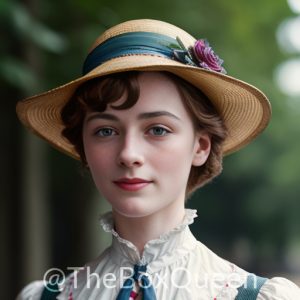
Men’s Fashion in the Edwardian Era
Formal Attire
Men in the Edwardian era had a stylish and polished appearance that emphasised formality and refinement. The three-piece suit, which consists of a coat, vest, and matching pants, became the norm for formal events. Compared to earlier times, suits were often made with a straighter, less fitting form. Long, narrow lapels and single-breasted designs were common on jackets.
Shirts and Accessories
Men wore crisp, high-collared shirts that were frequently accessorised with neckties or ascots. The starched linen or cotton detachable collar was a sign of formality and made laundry simple. In order to keep their collars in place, men also embraced the usage of collar pins and studs.
Hats were a necessary piece of clothing, with straw boaters and bowlers being popular options. The bowler hat was a representation of urban elegance due to its rounded crown and short brim. The straw boater hat, on the other hand, was a fashionable option for summer vacations. It was constructed of woven straw and had a flat crown and wide brim.
Men displayed their refined taste by carrying pocket watches and walking sticks as well. As a utilitarian timepiece and fashion accessory, pocket watches were traditionally kept on a chain in the vest pocket.
Outerwear and Casual Attire
During the Edwardian Era, overcoats, especially frock coats and topcoats, were frequently used as outerwear. Frock coats were regarded as formal clothing and frequently worn for important occasions because of its knee-length cut and fitting waist. Heavy wool or tweed topcoats were more suited for daily wear and offered warmth and protection throughout the colder months.
Men would choose Norfolk jackets, which had a belted waist and pleats, or blazers combined with flannel trousers for more informal events. These outfits demonstrated a shift towards a more laid-back and sporty appearance, indicating a more casual approach to fashion.
Undergarments
Both men and women wore particular undergarments that helped mould their preferred silhouettes underneath the gorgeous outerwear. Women also wore chemises, drawers, and petticoats in addition to corsets. Petticoats, which were frequently layers of starched cotton or linen, gave the skirts more fullness and improved the intended bell-shaped form. Chemises, loose-fitting clothing worn next to the skin, functioned as a barrier between the body and the corset and were often composed of lightweight cotton or silk. Women wore drawers, which had a split crotch like modern knickers and were worn for convenience.
Men got their own set of pants as well. In order to wick away perspiration and safeguard their outer garments, they wore undershirts, which were often made of cotton or linen. Under their trousers, they wore drawers or knee-length knickers. While preserving a professional appearance, these undergarments offered comfort and guaranteed appropriate hygiene.
Footwear
During the Edwardian Era, shoes were essential to complete the overall outfit. High-heeled footwear with slender, pointed toes was popular among women. The ideal shoe emphasised a thin, delicate appearance and was frequently embellished with ribbons or other decorative accents. Boots were also widely used, particularly for outdoor activities in bad weather. In order to provide support while walking or riding a horse, lace-up boots were frequently worn.
To suit various events, men donned a range of footwear choices. For formal occasions, lace-up leather shoes with a polished finish were the norm. Oxfords were especially well-liked because to their closed lacing method. Men might choose ankle boots or slip-on shoes made of suede or leather for more relaxed situations. These shoes were adaptable and comfy, making them ideal for both work and play.

Children’s Fashion
The Edwardian era saw children’s clothing reflecting the trends of their adult counterparts. Young girls wore clothes with high collars, voluminous skirts, and lace or embroidered accents that resembled those worn by their moms. Their outfits, however, frequently had more youthful-looking decorations and lower hemlines.
Boys often wore collared shirts, vests and knee-length pants with matching jackets and vests. These suits emphasised formality and sophistication from a young age by seeming like smaller copies of adult clothing. In order to complete their costumes, boys also wore headgear like flat caps or sailor hats.
Influence on Society and Legacy
The evolving societal dynamics and cultural influences of the Edwardian Era were mirrored in the fashion. The middle class’ ascent, the emergence of women in public life, and the introduction of new technology all had an impact on this era’s fashion trends. The upper classes were connected with the grandeur and refinement of Edwardian clothing, which stood for wealth, rank, and social standing.
Edwardian style has continued to influence contemporary fashion and design. Modern designers are still inspired by features like the hourglass silhouette, delicate fabrics, and elaborate craftsmanship. Period dramas and vintage-inspired clothing designs frequently make reference to the grandeur and beauty of Edwardian Era fashion, paying homage to an era of sophistication and creativity.
Beyond clothing and accessories, the Edwardian era included extensive fashion. It also included ideas about beauty, grooming techniques, and even the idea of casual and athletic clothing. A more complete understanding of the Edwardian era can be obtained by comprehending these additional facets of Edwardian clothing.
Beauty Ideals and Grooming
In the Edwardian era, a natural, youthful appearance was prized in terms of beauty standards for both men and women. Women embraced having pale skin, which they frequently attained by applying face creams and powders with components like zinc oxide or rice powder. Women would use blush or rouge to create the desired impression of rosy, flushed cheeks.
Cosmetics, with a focus on enhancing the eyes and lips, were growing in popularity. The practise of darkening the lashes and shaping the brows was widespread. Traditionally, eyebrows were sculpted into a straight, arched line. Reddish or pinkish hues were preferred for the lips, and lipsticks or tinted salves were employed to add colour.
Men were equally concerned with their grooming practises. For a polished appearance, a face must be freshly shaven. To attain a smooth, well-groomed appearance, men utilised straight razors or safety razors coupled with shaving creams or soaps. To style and manage the hair, hair tonics and pomades were frequently employed, frequently resulting in a sleek, slicked-back appearance.
Leisure and Sportswear
The popularity of leisure and sports grew throughout the Edwardian Era, and fashion changed to reflect this. Sportswear has become a separate sector, created especially for sports like tennis, golf, and cycling. Women’s sportswear frequently had looser silhouettes for ease of movement and was constructed of lightweight materials like cotton or linen. Sport-specific blouses, skirts, and jackets were fashioned to be functional and comfortable.
Men’s sportswear often consisted of loose-fitting shirts, hose, and knickerbockers or breeches. For outdoor activities, wool or knit sweaters were frequently used. During this time, tennis in particular saw tremendous growth in popularity, and tennis-specific clothing, such as white flannel trousers and polo shirts, entered the fashion scene.
The Influence of Designers and Design Movements
Influential designers who influenced fashion trends and designs also rose to prominence during the Edwardian era. Designers of renown, like Paul Poiret, Charles Frederick Worth, and Jeanne Lanvin, introduced avant-garde pieces that broke with the conventional look.
The idea of draping and looser, less structured clothing was first introduced by Paul Poiret, a designer renowned for his avant-garde style. Moving away from the more sombre tones of the early Edwardian period, he embraced foreign influences and incorporated brilliant colours and striking designs into fashion.
The organic and flowing forms that defined the Art Nouveau movement had a big influence on Edwardian clothing as well. This aesthetic, which praised nature and integrated ornamental aspects, had an impact on the creation of clothing, accessories, and even jewellery. Fashion of the time often included delicate floral themes, sinuous lines, and exquisite embellishment, which reflected the influence of Art Nouveau.
Legacy and Enduring Influence
The ensuing decades of the 20th century were built on the fashion of the Edwardian Era. Future fashion movements were influenced by its focus on refinement, attention to detail, and the quest of new aesthetic ideals.
The persistent appeal of vintage-inspired fashions and historical dramas are examples of the fashion legacy of the Edwardian era. Contemporary designers continue to be enthralled by the elegant silhouettes, sumptuous materials, and elaborate decorations, and they reinterpret and incorporate Edwardian features into their creations.
Additionally, those looking for a distinctive and elegant look can draw inspiration from the fashion of the Edwardian era. The fashion of this era gives a multitude of opportunities for personal style, whether it’s blending Edwardian-inspired features into everyday clothes or embracing the elegance for special events.

Conclusion
The Edwardian Era’s emphasis on elegance, luxury, and attention to detail made a lasting impression on the fashion industry. The clothing of this time period was simply amazing, from the magnificent gowns and well-tailored suits to the profusion of accessories. We gain comprehension of a time period that continues to influence contemporary fashion by comprehending the distinctive traits and fashions of the Edwardian Era.
You can now appreciate the nuances of this fascinating era because you have a thorough understanding of Edwardian Era fashion. Understanding Edwardian era fashion is a portal to the past, whether you’re researching history or looking for ideas for a vintage-themed event.
Continue looking, and let the splendour and opulence of Edwardian-era clothing inspire your personal sense of style.
There were several more noteworthy elements of Edwardian Era fashion that need attention, in addition to the fashion trends and styles already mentioned.
